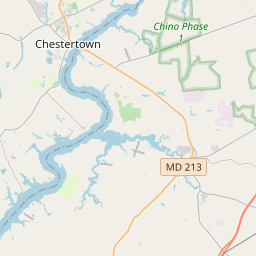Inscription
Before the Park (1674-1896)
Native Americans have used this land for more than 5,000 years, leaving behind piles of oyster shell, along with shards of pottery and projectile points from the Lat Archaic (3,750BC-1,250BC) to the Woodland (1,250BC-1,600AD) periods.
In 1674, Joseph and Ann Symmons established a plantation on Rock Point, remanants of which are within the Park boundaries. Through the 18th and early 19th century, the land passed through many prominent families in the County, including the Hawkins, Burle's, Hammond's, and Hancock's.
Known as Rock Creek Farm by 1851, the Hancock Family farmed the land until 1896. Archeaological remnants of their dwelling have been identified on the Park.
Military Period (1869-1927)
In 1896, the U.S. Government acquired 100 acres of land at Rock Point and established a military garrison under the United States Coastal Artillery Corps known as Ft Smallwood. Named for Major General William Smallwood, a Revolutionary War veteran and former Maryland Governon, the military garrison was one of the four Endicott Period (1890-1910) fortifications built on the Patapsco River during the Spanish-American War (1890-1910).
Together with Forts Howard, Armistead, and Carroll, Ft Smallwood formed a network of fortifications to protect
Baltimore from perceived Imperialist threats by Spain. By 1927, the United States War Department decided that coastal defenses along the Patapsco River were unnecessary and the property was acquired by Baltimore City for use as a public park.
Native Americans have used this land for more than 5,000 years, leaving behind piles of oyster shell, along with shards of pottery and projectile points from the Lat Archaic (3,750BC-1,250BC) to the Woodland (1,250BC-1,600AD) periods.
In 1674, Joseph and Ann Symmons established a plantation on Rock Point, remanants of which are within the Park boundaries. Through the 18th and early 19th century, the land passed through many prominent families in the County, including the Hawkins, Burle's, Hammond's, and Hancock's.
Known as Rock Creek Farm by 1851, the Hancock Family farmed the land until 1896. Archeaological remnants of their dwelling have been identified on the Park.
Military Period (1869-1927)
In 1896, the U.S. Government acquired 100 acres of land at Rock Point and established a military garrison under the United States Coastal Artillery Corps known as Ft Smallwood. Named for Major General William Smallwood, a Revolutionary War veteran and former Maryland Governon, the military garrison was one of the four Endicott Period (1890-1910) fortifications built on the Patapsco River during the Spanish-American War (1890-1910).
Together with Forts Howard, Armistead, and Carroll, Ft Smallwood formed a network of fortifications to protect
Baltimore from perceived Imperialist threats by Spain. By 1927, the United States War Department decided that coastal defenses along the Patapsco River were unnecessary and the property was acquired by Baltimore City for use as a public park.
Details
| HM Number | HM1UVN |
|---|---|
| Tags | |
| Marker Condition | No reports yet |
| Date Added | Friday, October 7th, 2016 at 1:02am PDT -07:00 |
Pictures
Locationbig map






| UTM (WGS84 Datum) | 18S E 371738 N 4335844 |
|---|---|
| Decimal Degrees | 39.16236667, -76.48458333 |
| Degrees and Decimal Minutes | N 39° 9.742', W 76° 29.075' |
| Degrees, Minutes and Seconds | 39° 9' 44.52" N, 76° 29' 4.5" W |
| Driving Directions | Google Maps |
| Area Code(s) | 410, 443, 202 |
| Closest Postal Address | At or near Bay Front Dr, Pasadena MD 21122, US |
| Alternative Maps | Google Maps, MapQuest, Bing Maps, Yahoo Maps, MSR Maps, OpenCycleMap, MyTopo Maps, OpenStreetMap |
Is this marker missing? Are the coordinates wrong? Do you have additional information that you would like to share with us? If so, check in.
Nearby Markersshow on map
Show me all markers in: Pasadena, MD | Anne Arundel County | 21122 | Maryland | United States of America
Maintenance Issues
- Is this marker part of a series?
- What historical period does the marker represent?
- What historical place does the marker represent?
- What type of marker is it?
- What class is the marker?
- What style is the marker?
- Does the marker have a number?
- What year was the marker erected?
- Who or what organization placed the marker?
- This marker needs at least one picture.
- Can this marker be seen from the road?
- Is the marker in the median?

Comments 0 comments